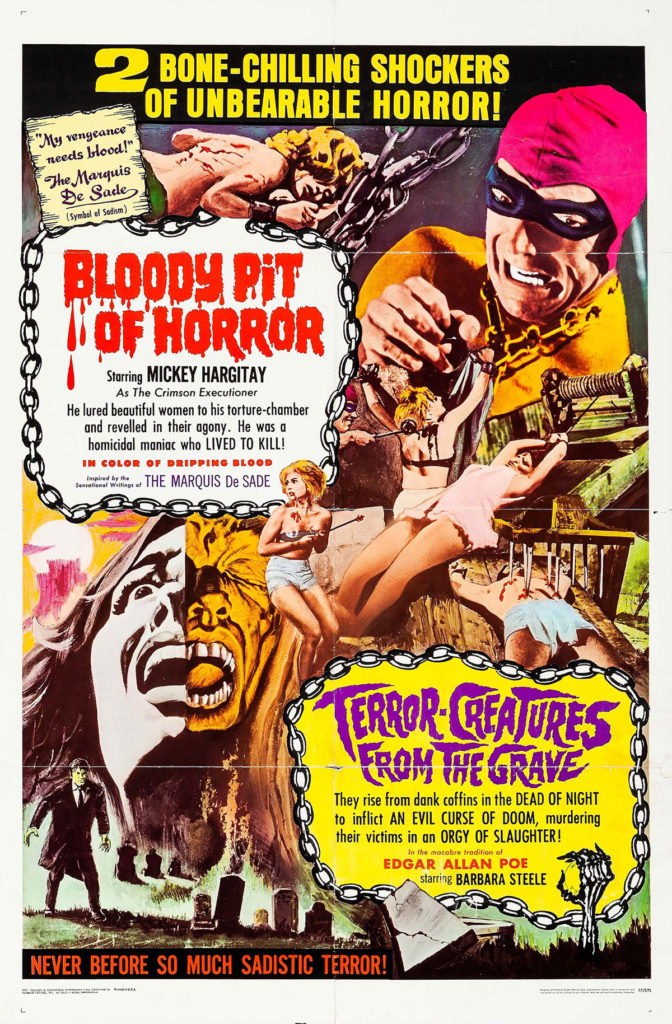 Pacemaker Pictures, the English-language distributors of Terror-Creatures from the Grave, the 1965 Italian gothic horror flick, sure went all in on the title. Perhaps they had a shortlist and couldn’t decide between Terror from the Grave and Creatures from the Grave so, like some parents, decided to burden their charge with a hyphenated name. It’s a mouthful, but has loads of kitsch to it.
Pacemaker Pictures, the English-language distributors of Terror-Creatures from the Grave, the 1965 Italian gothic horror flick, sure went all in on the title. Perhaps they had a shortlist and couldn’t decide between Terror from the Grave and Creatures from the Grave so, like some parents, decided to burden their charge with a hyphenated name. It’s a mouthful, but has loads of kitsch to it.
Directed by Massimo Pupillo, from a screenplay by Romano Migliorini and Roberto Natale, Terror-Creatures is plays like a pageant in honor of horror cinema. Shot in stark black and white by Carlo Di Palma, the film relies heavily on early horror film styles and storytelling, while combining it with contemporary trends in Italian cinema. There’s the dark and stormy night, overlayered with endless theremin music, combined with dramatic closeups and the multinational cast mouthing their lines in different languages. It’s like watching an old Universal horror film, and everyone is poorly dubbed. Unfortunately, that dubbing can be somewhat distracting, but Pupillo and company nevertheless made a decent horror film. Continue reading “Terror-Creatures from the Grave, aka 5 tombe per un medium”
